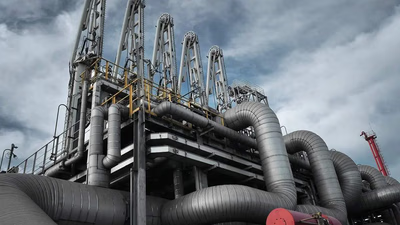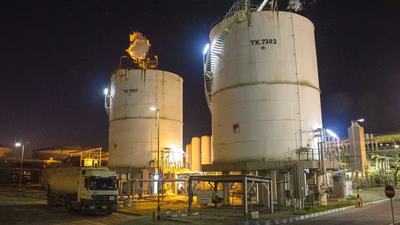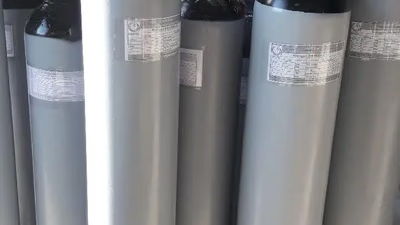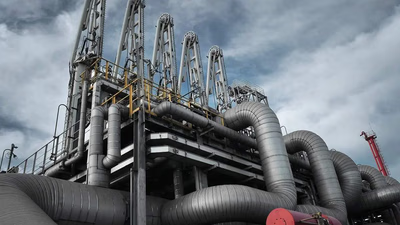
Nitrogen production in Middle East supports agriculture and industry.
Nitrogen production in the Middle East is done with the valid certifications of international companies, and this factor has led to our products being sold in the market at a very competitive and high price. Nitrogen producers in the Middle East sell thousands of tons of liquid nitrogen annually, and the plan is to have all of their sales through stock markets in the coming years. With our studies, we have come to the conclusion that the export market has a good capacity to sell nitrogen gas, which we have prepared arrival arrangements to enter this market in coordination with the customs.
West Asia, particularly countries like Saudi Arabia, Iran, and Qatar, is a major player in nitrogen-based fertilizer production. These countries possess abundant natural gas reserves, which serve as a primary feedstock for ammonia production, a key precursor for nitrogen fertilizers. They utilize advanced technologies, such as the Haber-Bosch process, to convert natural gas into ammonia and subsequently produce nitrogen-based fertilizers like urea and ammonium nitrate. The region's favorable access to raw materials and production capabilities contribute to a significant share in the global fertilizer market.
The agricultural sector in West Asia is a major consumer of nitrogen-based fertilizers. The region has diverse agricultural activities, including crop cultivation, horticulture, and greenhouse farming. Farmers rely on nitrogen fertilizers to enhance soil fertility, promote plant growth, and increase crop yields. The use of nitrogen fertilizers helps offset nitrogen deficiencies in the soil, contributing to improved agricultural productivity and food security in the region.
Given that the selling price was based on the dollar. Therefore, selling these products to a market other than the domestic market can lead to very high exchange rates and added value for companies. We have gone through the legal process to enter foreign markets and hope to supply more than 100 tons of products to this new market every week. Nitrogen companies in the Middle East seek to maintain their market share in order to be able to offer their products competitively and to devote part of their capacity for selling in new markets.
Nitrogen finds applications beyond agriculture in West Asia's industrial sectors. The region has a growing industrial base, including oil and gas, petrochemicals, chemicals, and manufacturing. Nitrogen is used for various industrial processes, such as purging and pressurizing pipelines, creating inert atmospheres, and preventing oxidation and combustion. Industries in West Asia rely on nitrogen for safety, quality control, and efficient production operations.
The oil and gas sector plays a crucial role in West Asia's economy. Nitrogen is widely used in the oil and gas industry for various applications. It is employed for gas blanketing and purging in storage tanks and pipelines to prevent the formation of explosive mixtures and inhibit corrosion. Nitrogen is also used in enhanced oil recovery techniques, where it is injected into oil reservoirs to maintain pressure and displace oil, facilitating extraction.
West Asia is witnessing rapid industrialization and infrastructure development, leading to increased demand for nitrogen across various sectors. The construction industry, in particular, requires nitrogen for applications such as cryogenic cooling for concrete and nitrogen purging in pipelines during construction projects. West Asia's nitrogen production capacity allows it to be a significant exporter of nitrogen-based fertilizers and industrial gases. Countries in the region export nitrogen products to various global markets, including neighboring regions, Europe, Asia, and Africa. The strategic location of West Asia and its access to international shipping routes contribute to its competitiveness in the global nitrogen trade.
-

Nitrogen is primarily used to produce ammonia through the Haber process, which is essential for fertilizers and various chemicals. Its applications span multiple industries, including food and beverage, electronics, and pharmaceuticals. In the food sector, nitrogen preserves freshness by creating an inert atmosphere in packaging, inhibiting microbial growth. In electronics, it prevents oxidation during soldering and is crucial in semiconductor manufacturing. Nitrogen also plays a role in cryogenic applications for preserving biological samples and is used as a refrigerant for food transport. Additionally, nitrogen enhances plant growth by being a key component of proteins and chlorophyll. However, both deficiency and excess of nitrogen can negatively impact plant health. The versatility of nitrogen makes it indispensable across various sectors.
-

Nitrogen was discovered in 1772 by Daniel Rutherford, who identified it as a gas that does not support combustion. This discovery was pivotal in the understanding of air composition, alongside contributions from Antoine Lavoisier and others. Lavoisier named nitrogen "azote" due to its inert properties, which prevent it from sustaining life. The term "nitrogen" was later proposed by Jean-Antoine Chaptal in 1790, linking it to its association with nitric acid. Throughout the 19th and 20th centuries, nitrogen"s role expanded significantly, particularly in agriculture through the Haber-Bosch process, which enabled large-scale ammonia production for fertilizers. The nitrogen cycle became a key area of study, highlighting its importance in ecosystems and agriculture. Understanding nitrogen"s properties and reactions has led to advancements in various fields including cryogenics and food preservation. The historical context of nitrogen"s discovery illustrates the evolution of chemical knowledge and its practical applications. "
-

Nitrogen production in the Middle East is characterized by competitive pricing and significant export potential, particularly in West Asia. Countries like Saudi Arabia, Iran, and Qatar leverage their abundant natural gas reserves to produce ammonia, a precursor for nitrogen fertilizers. The region employs advanced technologies such as the Haber-Bosch process to convert natural gas into ammonia and subsequently into nitrogen-based fertilizers like urea and ammonium nitrate. The agricultural sector is a major consumer of these fertilizers, enhancing soil fertility and crop yields. With plans to transition sales through stock markets, nitrogen producers aim to expand their market reach beyond domestic borders. The legal groundwork for entering foreign markets has been established, with expectations to supply over 100 tons weekly. Beyond agriculture, nitrogen plays a crucial role in West Asia"s industrial sectors, including oil and gas, petrochemicals, and manufacturing. It is utilized for safety measures in pipelines and enhanced oil recovery techniques.
The ongoing industrialization in the region is driving demand for nitrogen across various applications, including construction projects that require cryogenic cooling and purging processes. West Asia"s strategic location enhances its competitiveness as a significant exporter of nitrogen products globally.
-

Nitrogen, a nonmetallic gas, constitutes about 78% of Earth"s atmosphere and is essential for life. It forms amino acids, proteins, and nucleic acids, which are crucial for all living organisms. Nitrogen exists primarily as a diatomic molecule (N2), making it stable and unreactive under normal conditions. Certain microorganisms can convert atmospheric nitrogen into usable forms through nitrogen fixation, enabling plants to utilize it for growth. Nitrogen is vital in agriculture as it often limits productivity; thus, nitrogen-based fertilizers are widely used to enhance soil nutrient levels. Industrially, nitrogen serves various purposes including food preservation, electronics manufacturing, and as a cryogen in freezing processes. However, excessive use of nitrogen fertilizers can lead to environmental issues like nutrient pollution and eutrophication in aquatic ecosystems. The element also plays a role in atmospheric chemistry during high-energy events that produce reactive nitrogen compounds contributing to smog and acid rain.
Overall, nitrogen is integral not only for biological processes but also for numerous industrial applications. "




